Please Take Note: This is a review of the final game, but it might change slightly based on the Kickstarter campaign’s success. The game is being reviewed on the components and the rules provided with the understanding that “what you see is not what you might get” when the game is published. If you like what you read and want to learn more, we encourage you to visit the game’s website or visit the Kickstarter campaign. Now that we have all that disclaimer junk out of the way, on with the review.
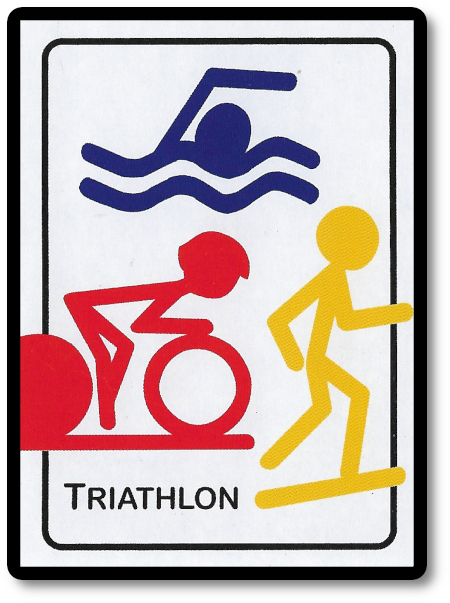
The Basics:
- For ages 8 and up
- For 3 to 9 players
- Approximately 30 minutes to complete
Geek Skills:
- Active Listening & Communication
- Counting & Math
- Logical & Critical Decision Making
- Reading
- Pattern/Color Matching
- Strategy & Tactics
- Hand/Resource Management
Learning Curve:
- Child – Easy
- Adult – Easy
Theme & Narrative:
- Run a race comprised of three different events, but always with the same goal
Endorsements:
- Gamer Geek mixed!
- Parent Geek approved!
- Child Geek approved!
Overview
American triathlete and six-time Ironman Triathlon World Champion Mark Allen said, “You can keep going and your legs might hurt, or you can quit and your mind will hurt for a lifetime.” A triathlon is a grueling race requiring its participants to complete three different events: swimming, running, and cycling. It tests the athlete’s physical and mental endurance, demanding different disciplines each leg of the event. In this game, you’ll move as quickly as possible to the finish line, with victory going to the first player to complete three specific hands.
Triathlon, designed and to be self-published by Curtis Hed, will reportedly be comprised of 94 cards. As this is a prepublished game review, I cannot comment on the game component quality. However, the copy we were provided was excellent, with durable cards and bright colors that were easy on the eyes. Not included with the game, but necessary to play, is a pen or pencil and a piece of paper to keep track of players’ progress.
Warmup Stretching
To set up the game, first shuffle the deck and deal to each player five cards, face-down. Players should look at their cards but keep them hidden from opponents until played.
Second, deal each player one card, face-up, in front of them. This is the player’s personal discard pile.
Third, place the remaining cards in the middle of the playing area, face-down, and within easy reach of all the players. This is the draw deck for the duration of the game.
That’s it for the game set up. Determine who will go first and begin your race!
Your Training Program
The Triathlon deck of cards has three different colors (blue, red, and gold/yellow) and three suits (cyclist, swimmer, and runner), for a total of nine unique sets. Each set is comprised of eight cards (cards numbered one through seven and one Pro card).
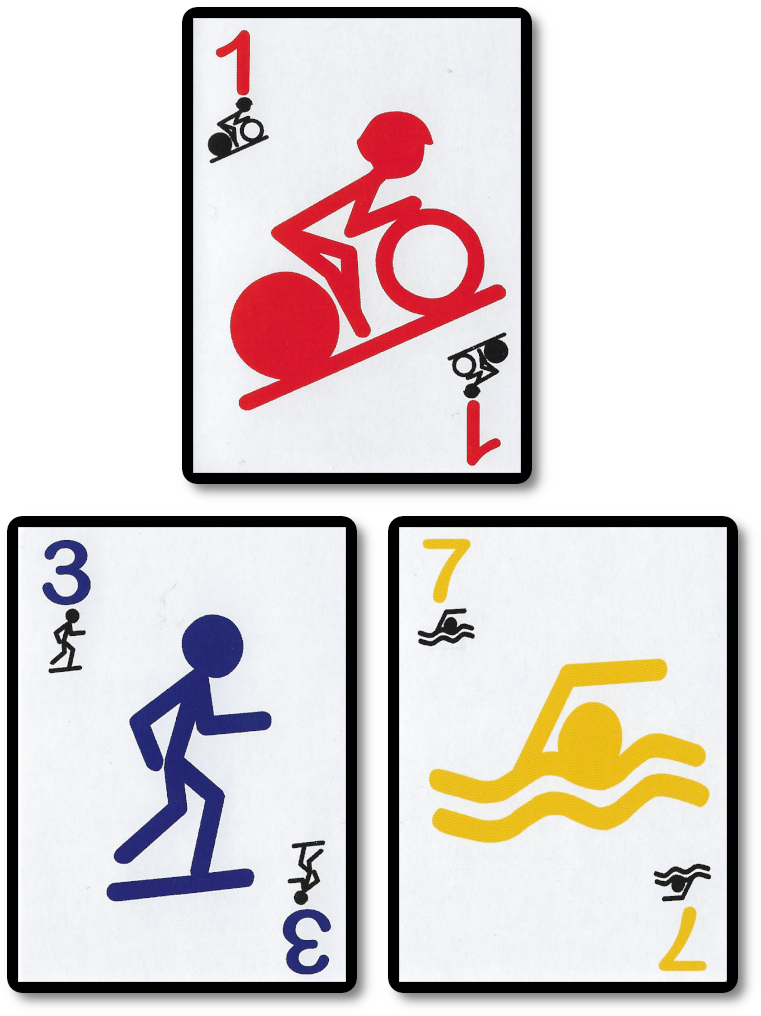
The Pro card in each set is considered “wild.” It can be of any number but cannot change its color or suit.
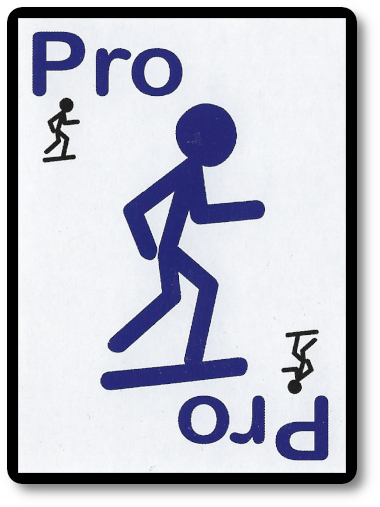
There are also three Super Pro cards. These are also considered “wild” and can represent any number and color but cannot change its suit.
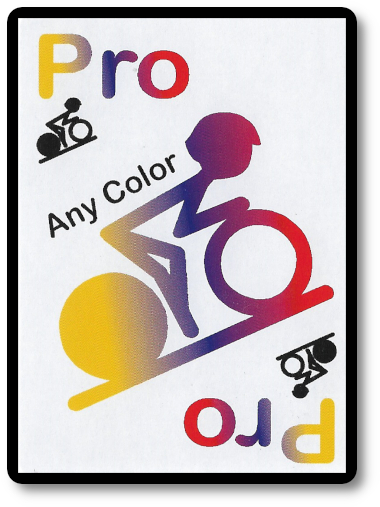
The Innovator card is the uber-uber “wild” card. It can represent any number, color, or suit. Due to this being such a dynamic card, there is only one in the deck.
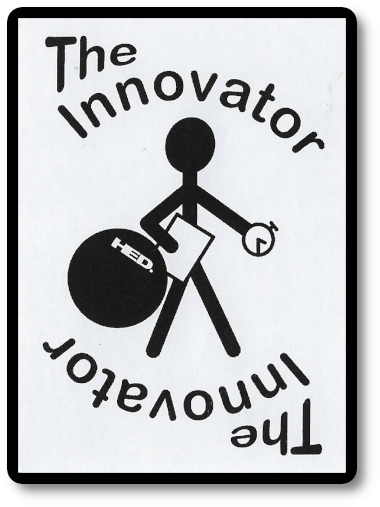
There are also Adrenaline Rush and Injury cards, but I’ll be discussing these when we summarize gameplay. It just makes more sense to do so, as these cards trigger specific actions and conditions in the game.
Racers! On Your Marks!
Triathlon is played in turns and rounds with a minimum of three rounds per game. A player’s turn is summarized here.
Step One: Check for Injury
The Injury card, thematically speaking, indicates that you have suffered some injury while on the race, hampering your performance. Don’t worry. You are a trained athlete, and you will work through the pain.
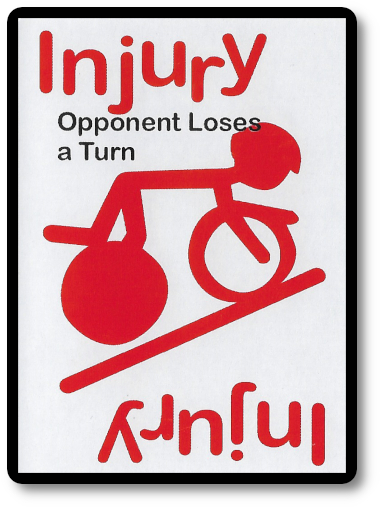
If there is an Injury card on the player’s personal discard pile, they lose their turn this round. The player takes the Injury off their personal discard pile and places it face-down next to it, revealing the below card. Only one Injury card can be removed per turn, which means if the player is suffering from multiple injuries (as in, they have more than one Injury card in their personal discard pile), they will continue to lose the bulk of their turn until such time they being their turn with no injuries.
Step Two: Draw One Card
If the player is not suffering any injuries, they can now draw one card. The card drawn can be any visible non-Injury card from any player’s personal discard pile (visible to all) or draw the top-most card from the draw deck. Whatever card is drawn is added to the player’s hand.
If the draw deck is ever depleted, pause the game for a moment and collect all but the top-most discarded cards from each player’s personal discard pile. Collect any discarded Injury and Adrenaline Rush cards, as well. Shuffle all of these cards together and place the deck face-down to create the new draw deck.
Step Three: Discard
The player must now discard one card from their hand. Any card discarded is placed in the player’s personal discard pile. If the player has an Injury card in their hand, they may discard it to any opponent’s personal discard pile (causing the opponent to lose their next turn).
At this point, any player’s opponents can play an Adrenaline Rush card from their hand, but only if that opponent doesn’t have an Injury card on their personal discard pile. The Adrenaline Rush card allows the opponent to collect the card that was just discarded by the player. The opponent collects the card, adding it to their hand, and places their Adrenaline Rush card face-down next to their personal discard pile, discarding it.
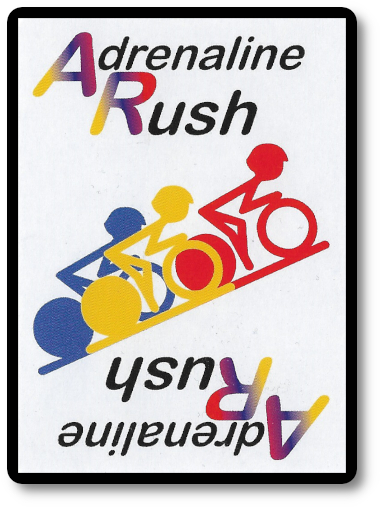
Step Four: Complete a Stage and End the Round
If the player has the right combination of cards, they can now announce they are ending the stage and reveal the cards remaining in their hand. To do so, the player must be able to present a hand comprised of a certain set of cards.
- Stage One: A run of five cards of any color and suit
- Stage Two: A run of five cards of a single suit or the same color
- Stage Three: A run of five cards of a single suit and the same color
The stages, while sequentially named, do not need to be completed in sequential order. That is to say; a player can complete Stage Three before Stage One or Stage Two. Remember that the Pro, Super Pro, and The Innovator cards can be used to substitute and represent numbers, suits, and colors.
Completing a stage automatically ends the round. The player marks down which of the stages they completed on paper. You only need to complete each stage once (and again, in any order). If the round has ended, the cards are all collected, shuffled, and a new round is started using the game set up instructs noted above.
If the player cannot complete the round, their turn ends, and the next player in turn order sequence now takes their turn starting with step one noted above.
Crossing the Finish Line!
The first player to complete all three stages wins the game. Optionally, play can continue (without the winner) to determine who comes in second or third.
To learn more about Triathlon, visit the game’s website or visit the Kickstarter campaign.
Final Word
 The Child Geeks enjoyed the game, finding it fun to grab an opponent’s card to complete their stages and interacting with each other with injuries and quicksaves. According to one Child Geek, “It is a fun card game. It was easy for me to learn, and it feels like a race. Even when another player is ahead, you can always catch up.” Another Child Geek said, “I like how each of the stages is a little bit harder than the last, but you never have to follow them in order. I was able to play the cards the way I wanted and win the race!” When all the runners had crossed the finish line, the Child Geeks caught their breath and agreed that Triathlon was a game they enjoyed.
The Child Geeks enjoyed the game, finding it fun to grab an opponent’s card to complete their stages and interacting with each other with injuries and quicksaves. According to one Child Geek, “It is a fun card game. It was easy for me to learn, and it feels like a race. Even when another player is ahead, you can always catch up.” Another Child Geek said, “I like how each of the stages is a little bit harder than the last, but you never have to follow them in order. I was able to play the cards the way I wanted and win the race!” When all the runners had crossed the finish line, the Child Geeks caught their breath and agreed that Triathlon was a game they enjoyed.
 The Parent Geeks also enjoyed the game, finding it to be a new take on the classic card game, Gin Rummy. According to one Parent Geek, “It’s like Gin Rummy, but different enough to be its own game. I’ve really been enjoying it. A great mix of competitive hand management with the need to play your cards as quickly as possible.” Another Parent Geek said, “My family and I have been really enjoying it. It has worked great at our table, is a game you can easily play in a short amount of time and relax with everyone having a blast.” According to the Parent Geeks, after all the games were done and the trophy presented, Triathlon took home the gold.
The Parent Geeks also enjoyed the game, finding it to be a new take on the classic card game, Gin Rummy. According to one Parent Geek, “It’s like Gin Rummy, but different enough to be its own game. I’ve really been enjoying it. A great mix of competitive hand management with the need to play your cards as quickly as possible.” Another Parent Geek said, “My family and I have been really enjoying it. It has worked great at our table, is a game you can easily play in a short amount of time and relax with everyone having a blast.” According to the Parent Geeks, after all the games were done and the trophy presented, Triathlon took home the gold.
 The Gamer Geeks found Triathlon to be well thought out and easy to play but were never enthralled by it. According to one Gamer Geek, “It’s an OK game. It’s a card game. I like the race-like element and the multiple discard piles – that was a unique take – but I just wasn’t excited by it.” Another Gamer Geek said, “A simple card game to play, difficult to win, and engaging. I thought it was fun, but it wouldn’t be a game I would normally gravitate to. That said, I thought it was OK.” The Gamer Geeks discussed and couldn’t find any faults with Triathlon, but nor did they find anything particular to love. The result was a mixed approval from the gaming elitists.
The Gamer Geeks found Triathlon to be well thought out and easy to play but were never enthralled by it. According to one Gamer Geek, “It’s an OK game. It’s a card game. I like the race-like element and the multiple discard piles – that was a unique take – but I just wasn’t excited by it.” Another Gamer Geek said, “A simple card game to play, difficult to win, and engaging. I thought it was fun, but it wouldn’t be a game I would normally gravitate to. That said, I thought it was OK.” The Gamer Geeks discussed and couldn’t find any faults with Triathlon, but nor did they find anything particular to love. The result was a mixed approval from the gaming elitists.
 Triathlon is a lot of fun. Yes, it’s like Gin Rummy in the sense that you are essentially racing to be the first to complete your sets and runs before the other player, but that’s where any similarity ends. The different discard piles give the player something like a buffet to choose from when it’s their turn, giving players choice and a certain amount of control. This reduction in random card draws allows the player to be more focused and purposeful with how they are building their hand to complete a stage. This was not lost on any of our players.
Triathlon is a lot of fun. Yes, it’s like Gin Rummy in the sense that you are essentially racing to be the first to complete your sets and runs before the other player, but that’s where any similarity ends. The different discard piles give the player something like a buffet to choose from when it’s their turn, giving players choice and a certain amount of control. This reduction in random card draws allows the player to be more focused and purposeful with how they are building their hand to complete a stage. This was not lost on any of our players.
I would also like to mention how enjoyable it is to have a game that plays fast but also becomes more difficult as you play it. With three possible ways to complete a stage, each player has a wide field to explore. The first stage is pretty easy to complete because you have a lot of options. The second is not as easy as your options are reduced. The third and final stage is the most difficult and also the most frustrating. If you are a player who can quickly complete a stage, you’ll find subsequent ones more time-consuming. Time, I might add, that is not on your side. All it takes is one player completing a stage, and everyone has to restart the round. This proved to create a good deal of focus and excitement in our games and a clever way of ensuring that no one player ever runs away with the game, so to speak.
In a way, I guess you could say that the game was thematically making it harder for the faster racer to breathe and keep up a brisk pace. This allowed others to catch up, but it didn’t hinder the faster player to a point where it felt like they were purposely being sabotage or punished for being the stronger player—a great bit of game mechanic balancing.
My least favorite aspect of the game is the Innovator card. I think it’s a cheat and gives one player each round an advantage based purely on the random luck of the draw. Not a fan. There are already enough “wild” cards in the game to make the Innovator card unnecessary. We tried the game with and without the card, and the feedback we received strongly suggests players didn’t miss it when it was left in the box. I suggest you make it an “optional” card and only leave it in the deck if you play with very inexperienced players.
Overall, I am most pleased with Triathlon. It’s a casual card game with a unique enough twist to make each game engaging but not so clever that it leaves players scratching their heads. Balanced and fast, it challenges and rewards with equal measure, giving everyone at the table an equal opportunity to excel without ever favoring any one approach to victory. Do try this card game when time allows you to see if you have what it takes to finish strong!
This is a paid-for review of the game’s final prototype. Although our time and focus were financially compensated, our words are our own. We’d need at least 10 million dollars before we started saying what other people wanted. Such is the statuesque and legendary integrity of Father Geek, which cannot be bought except by those who own their private islands and small countries.



